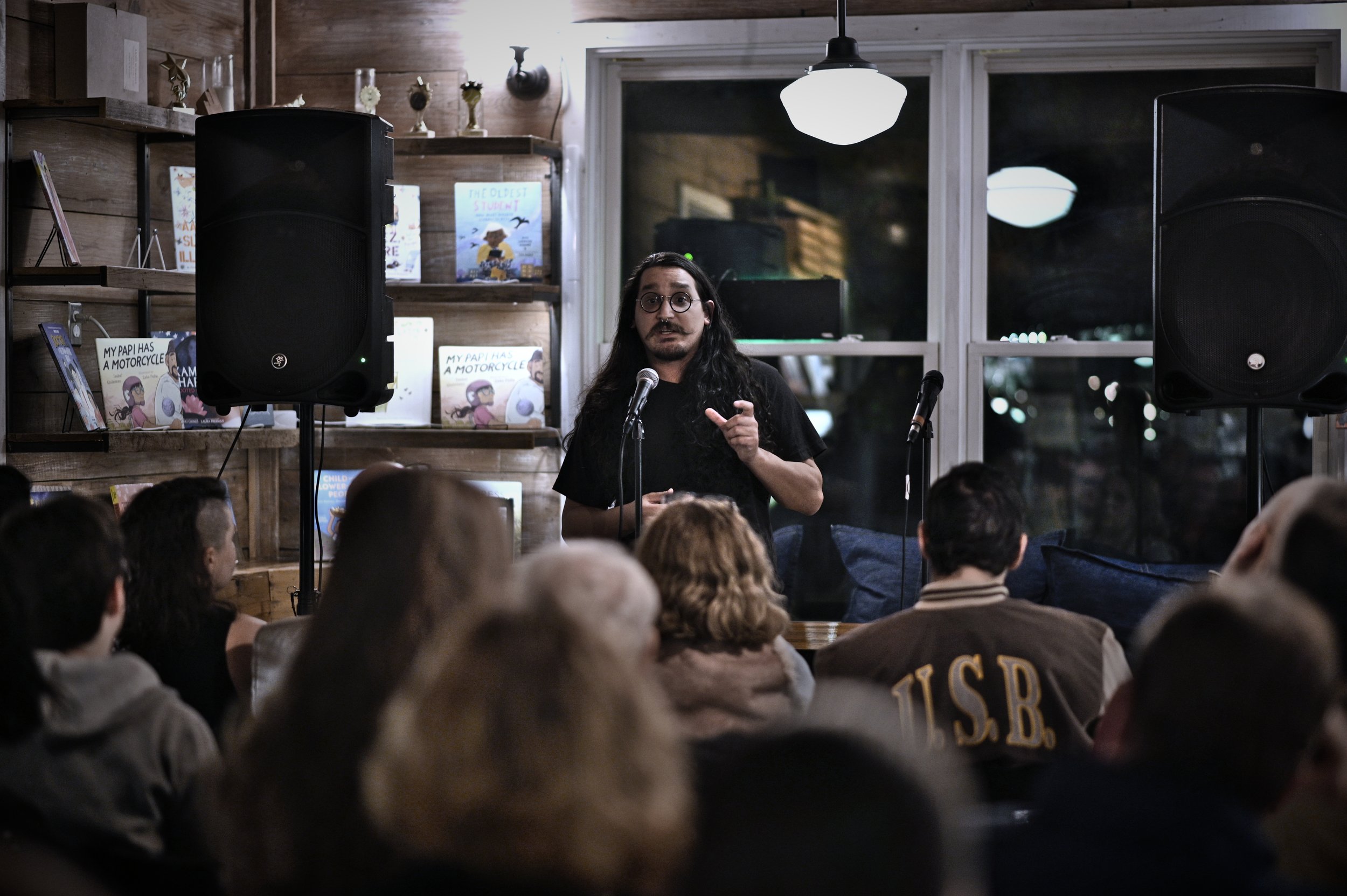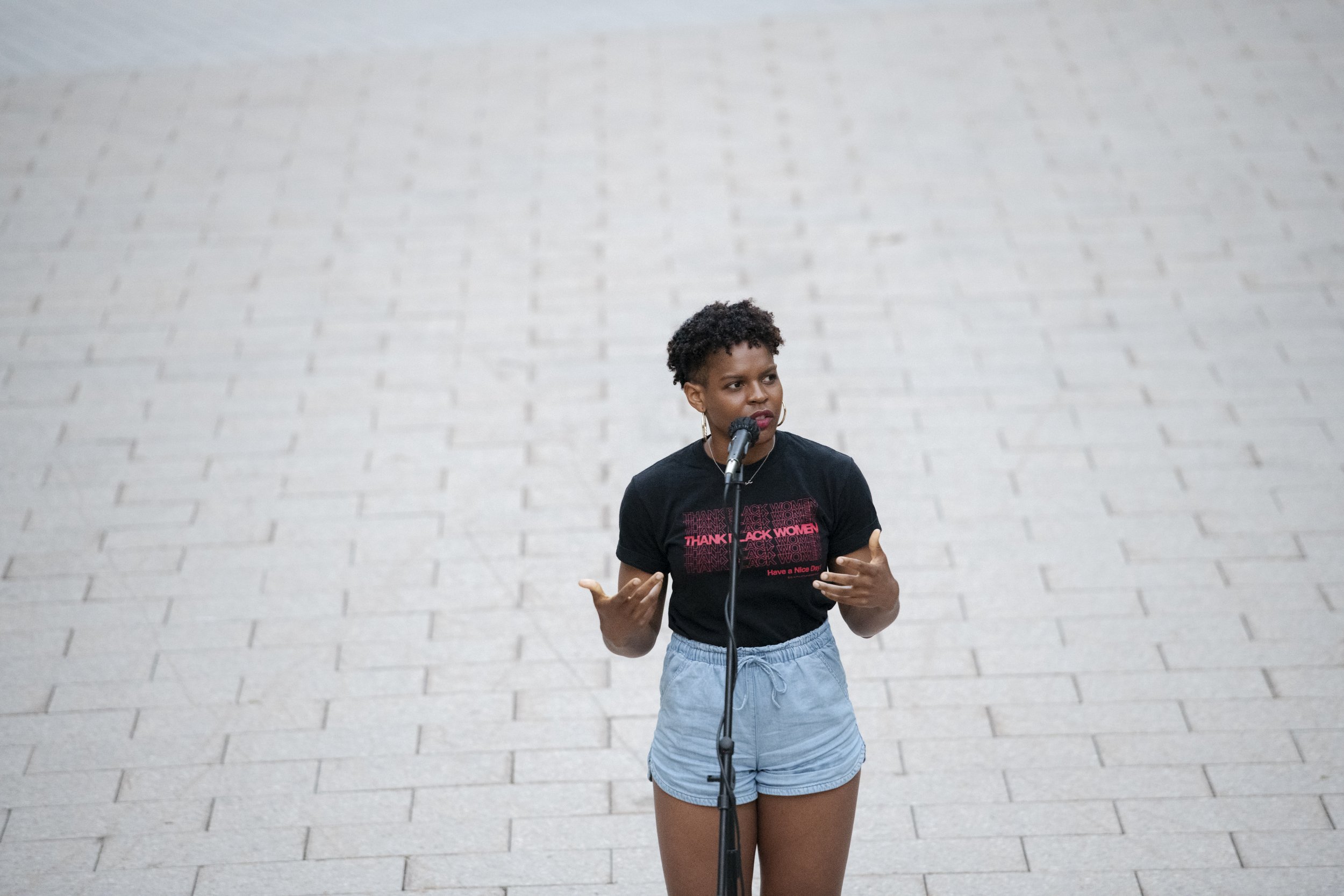In this week’s episode, both of our storytellers share stories about the problems of finding representation of diverse skin tones in science and medicine.
Part 1: While preparing for a lecture, Stacy Vasquez finds a racist term on a skin slide.
As a first-generation Chicano in STEM, Stacy Vasquez recognizes the importance of addressing the STEM achievement gap and creating an inclusive space that will inspire students from marginalized groups. His dissertation researched and examined the impacts of a multicultural curriculum in a traditional microbiology course. With an academic background in microbiology, he was always interested in learning how the discrete, scientific information was related to issues impacting society. Traditional microbiology courses often place heavy emphasis on rote memorization of discrete facts and focus very little on how the content relates to societal issues. The multicultural curriculum aimed to teach students about various social issues while still managing to teach the objective, scientific content. The relevant topics were intended to spark student interest in efforts to strengthen their academic performance. He has continued implementing culturally responsive teaching practices in my other sciences courses, such as Human Anatomy & Physiology.
Part 2: While learning about Lyme disease in medical school, LaShyra Nolen isn’t satisfied when the professor can’t tell her what the rash would look like on dark skin.
Born and raised in Southern California, LaShyra “Lash” Nolen is a writer, activist, and third-year MD/MPP dual-degree student at Harvard Medical School and Kennedy School of Government, where she is serving as student council president of her medical school class, the first black woman documented to hold this leadership position. Her work has been featured in the New England Journal of Medicine, Nature, and Teen Vogue, among others. She is the Founding Executive Director of “We Got Us,” a grassroots community empowerment project with the goal of bringing vaccine education and access to marginalized communities in the wake of the COVID-19 pandemic. She is a co-host of the Clinical Problem Solvers Anti-Racism in Medicine Podcast. Her work has earned her the honor of being named a Boston Celtics “Hero Among Us” and named on the Forbes “30 Under 30” in healthcare list. She is a fervent advocate for social justice and enjoys storytelling through spoken word poetry, rap, and writing.
Episode Transcript
Part 1
My love of science started at a really young age, which is crazy because I come from a family that didn't really value science, let alone just education in general. So it's very interesting that I ended up in the position that I am today.
So, how did this happen? When I was really young, my mom had this friend, Vicki Abel, god rest her soul. She was a veterinary technician. A lot of the times that she came over, she was in her scrubs.
I loved animals, although we didn't have any. She would always indulge me and just let me ask her questions about what she did. That got me really interested in the career prospects of maybe going into something that dealt with animals.
She put into my head that you can become a veterinarian if you want, right? You don't just need to own the animals. You can work with the animals.
One of the things that she told me in order to achieve that was you have to be really good at school, particularly you have to be really good at science. That really put me on the trajectory into STEM education. That got me really wanting to pay attention in my science classes.
Stacy Vasquez shares his story at Wild Detectives in Dallas, TX in December 2022. Photo by Jason Hensel.
Now, clearly, I did not become a veterinarian. I'm a professor of biology. But, again, that put me on that path. And every time I was in a science class, it mattered.
I was very fortunate along the way. To me, faculty mentors that looked beyond the content knowledge, they saw science as something that was meant to empower. Something that was meant to inspire. That naturally became a part of my own teaching philosophy as I was in my classes.
Let's take ourselves to 2019, prior to the pandemic. I'm teaching a traditional human anatomy and physiology course. We have lecture and we have lab. During lab, we are focusing on the integumentary system. Does anyone know what the integumentary system is? It's the skin.
So, I find myself needing some extra skin slides so I walked to the back laboratory preparation area where we have this old, dusty cabinet filled with these tins that contain tons and tons of glass slides. You have to go through this big catalog in order to find what you're looking for.
I'm thumbing through the catalog and I'm looking for ‘S’ for skin and I find the page. And as I'm going down, I find ‘Skin’. But what struck me as odd was that, in parentheses, there was a term next to some of the slides. This term was rooted in scientific racism. Was rooted in racist ideologies. It was previously used in things like anthropology, even the FBI. Things of that sort.
But it has since been abandoned because it is an egregious term that is outdated. It's obsolete. And it's simply not something that belongs on a slide in a science course. But there it was.
Now, I will say that this slide was very old. You could tell it was a product of its time. What was once a white label was now yellowed. The adhesive properties were giving out. It was folding. It was crinkled. The once dark text was very faded. The glue was slipping from the mount. It didn't belong there but there it was.
So I thought to myself in that moment of being shocked, I actually rubbed my eyes. Like I pinched myself. “Is this real? Is this slide really here in this lab and what do I do about it?”
I further thought, “Well, there's no way that this could exist today in 2019.”
So I looked up that same company and I looked up that same slide label. Lo and behold, in 2019, they were still printing and distributing that slide with that term placed on it.
And then I found another company, actually, that was also using that same slide label while others had become more modern. They transitioned to something a little bit more appropriate, less racist.
And I was angry but, rather than just getting rid of it, throwing it out, I thought, “Let me make something of this. If they're still making it today, what if we convinced them that they shouldn't make this any longer?”
Stacy Vasquez shares his story at Wild Detectives in Dallas, TX in December 2022. Photo by Jason Hensel.
What I did was I thought to myself, “I'm going to develop a project for my class and I'm going to require them to develop an evidence‑based argument to reach out to these companies and convince them that they should change it to something else.”
I was a little nervous at first. A little apprehensive. And, not to mention, some of my colleagues were like, “I don't know if you should do that. That's a little— you're really gonna just…”, they're like, “Maybe, you know, you're a representative of the institution. Maybe we shouldn't go through with this.”
Then I thought to myself too, “Well, how are the students going to react?” Because traditional science students are used to rote memorization of stages, phases, cycles. Make me memorize something and I'll regurgitate it on a test. But to try to get them to engage in social activism in a science course, that's something that doesn't really happen very often in these spaces.
So, I decide to myself, well, I never liked being told to memorize the periodic table. I never liked being told that I had to illustrate the Krebs Cycle for the sake of doing it. I wanted to do something beyond that. I wanted to do something more. I wanted to be inspired. I wanted to be empowered. I wanted to feel like I could elicit change in the context of the sciences.
So I said, “You know what? I don't care what my colleagues are saying. And, you know what? I don't care if the students are confused by this idea, because they're going to be confused anyways.”
So I go to the class and I tell them, “You know what, y'all? We are going to develop an evidence‑based argument using the same objectives we are going to have to do anyways to convince this company that they need to change this terminology that's present on the slide.”
At first, they were kind of like, “What? Just, where's my multiple choices? Where's my short answer response? Let me do that.”
But then I passed the slide around the class. I work with predominantly black and Latino students. And the looks on their faces were exactly like mine was. Shocked.

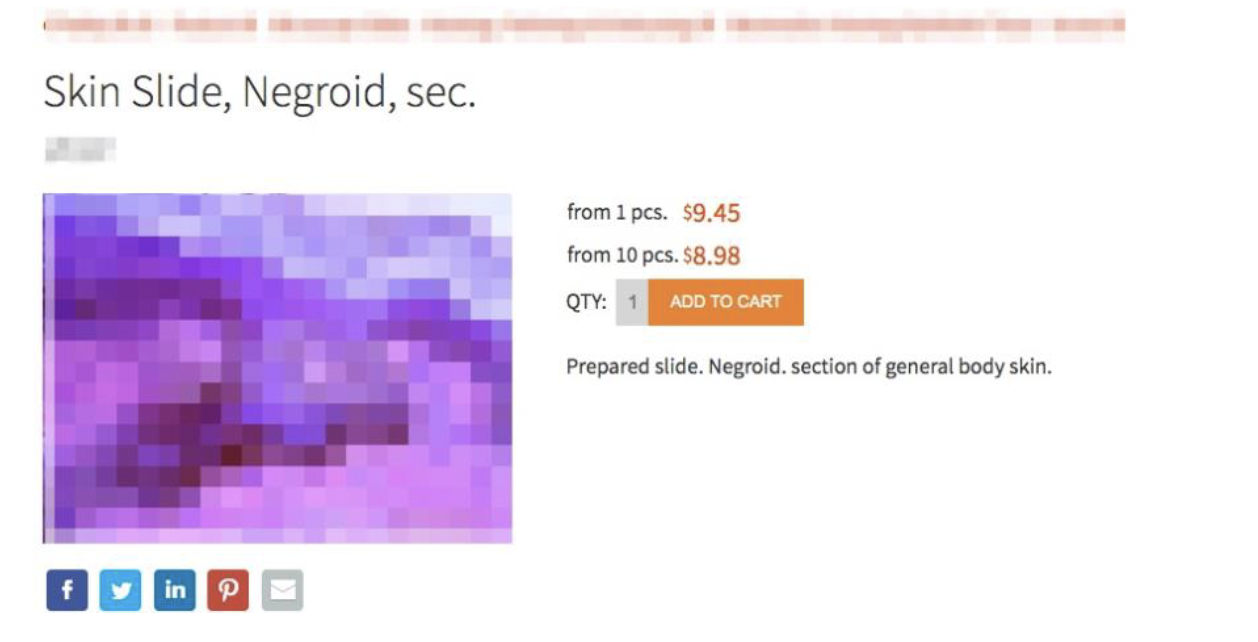
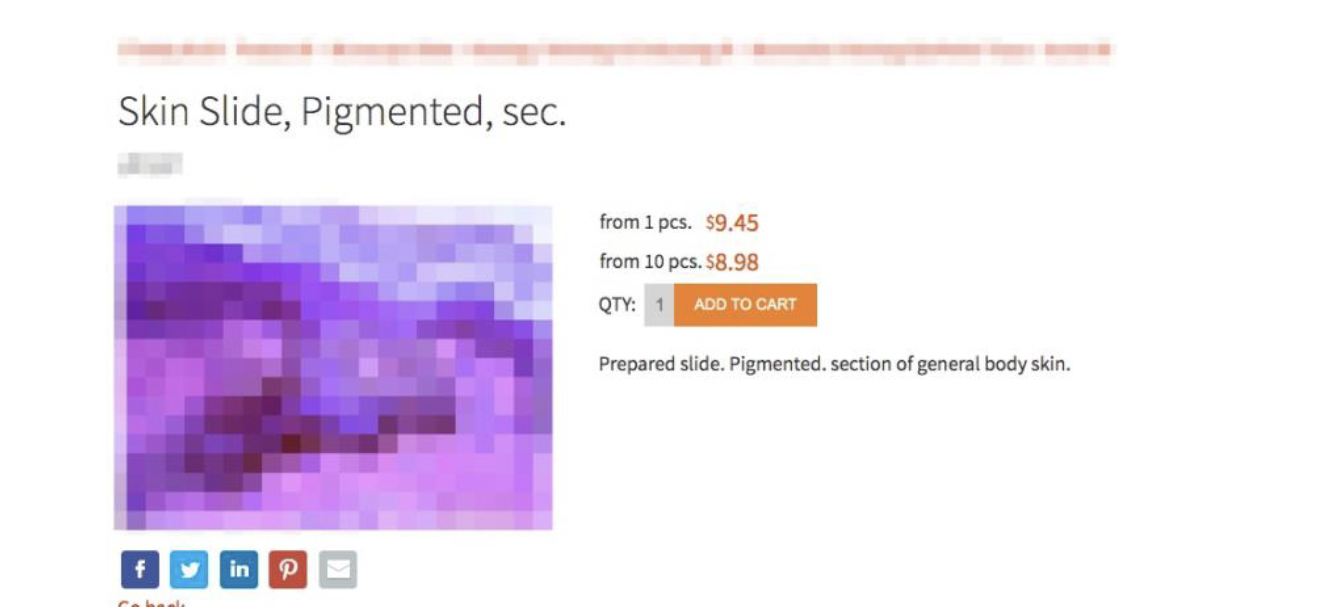
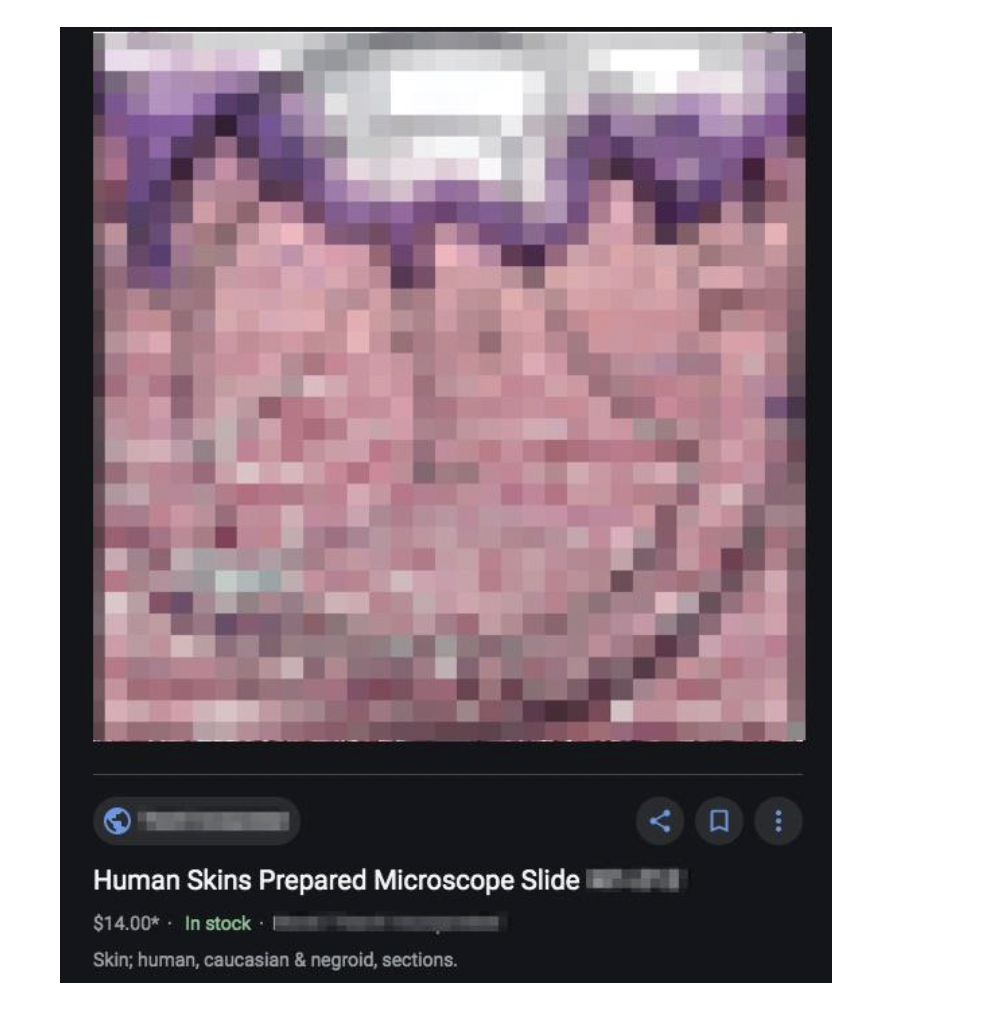
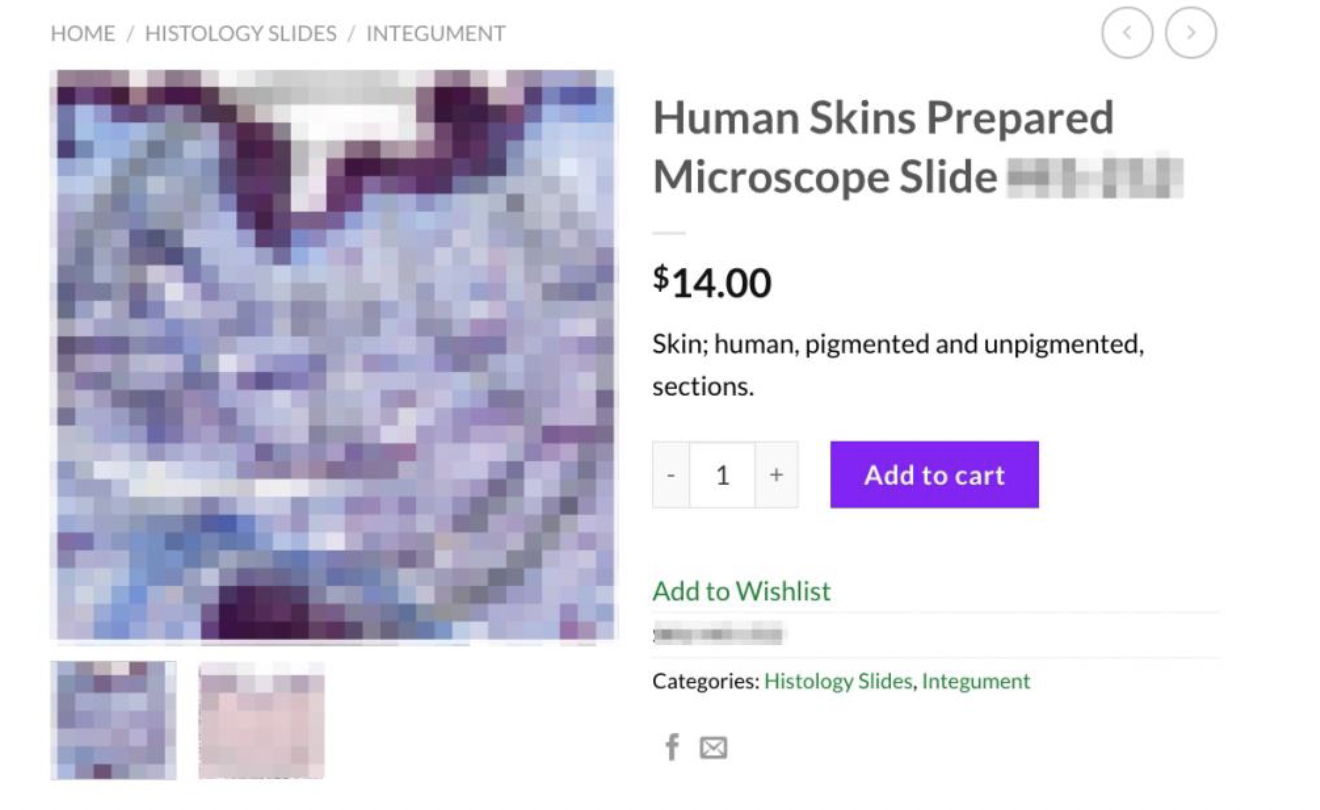
So we move forward with the project and they undergo the main tenets of what they're supposed to do. They're working collaboratively in groups. They're learning about how to engage in research. They're learning how to develop evidence‑based arguments.
We find ourselves at the end of the semester and we have this collective response ready to send off to the companies. We send an email and then we send some letters. I send it as a private citizen, not someone that works as a part of this grand institution. And I don't mention any names. It's just me as a private citizen because, again, some of my colleagues that stuck with me and I was like, “Well, maybe, I don't want to shake things up too much.”
So, I send it off and I honestly did not expect a response. Interestingly, when I did look it up, like I said it was on the internet, and it clearly stated that term that I can't even say out loud because it's so egregious.
One company did directly respond to my email and they said, “You know, we are an old company from the ‘60s. It was a product of its time. We didn't really go through the catalog. We did not realize that this was there. And you're right, we are going to remove this from our catalog and we are going to change it to a more appropriate term.”
Stacy Vasquez shares his story at Wild Detectives in Dallas, TX in December 2022. Photo by Jason Hensel.
The second company, they never responded formally, but the label changed from their website.
So, what I gathered from this was that if you see a wrong, you can make it right. You can do something about it.
But what was more important to me was that I get my students to recognize that they do have the ability to be the change that they want to see in the world.
And I can tell you, when I shared this news with my students, the looks on their faces is indescribable. I can't tell you what I witnessed that day but I hope that that says it all. And I know that they left feeling empowered and inspired, the very thing that I was taught to do from some of my faculty mentors where I had those same thoughts and feelings walking out of those classrooms and those lectures that day.
I still share this story with my classes moving forward and I can tell you that it's very validating. It makes me feel like this is important work. This is worth it.
I will always keep my eyes peeled for any types of injustices that may exist in the sciences because, let's face it, racism absolutely permeated the sciences. It is not apolitical, bias‑free, the great equalizer. There are disparities that exist and those disparities particularly impact the students that I serve, the students that look like me and come from where I come from.
So, to me, it is always far more rich to teach in that manner, to empower and to inspire as opposed to just making my students memorize facts for the sake of memorizing facts.
Part 2
If you look at my Twitter bio, you'll see three things that describe me. First, I'm Ty's daughter. Second, I'm a keen observer. And, third, I'm a future healer.
I'm confident in these three things today but it took some time for me to get there. See, I've always been my mother's daughter. I was raised by this phenomenal woman whose name is ____ [Tayesha? 00:00:28] Harps and she raised me as a single parent in Compton, California.
LaShyra Nolen shares her story at the MIT Amphitheater in Boston, MA in May 2022. Photo by Kate Flock.
Now, when you think about Compton, you might think about Kendrick Lamar or Venus and Serena Williams, but many folks also know it as one of the most dangerous places that has been in the in the media. But for me, it's home. And some of us call it The Hub.
When it comes to me being a keen observer, something that I notice about my home of Compton is that, when we would ride down the streets of Rosecrans, my mom would often have to pull over whenever she ran over a pothole to make sure that the hubcap didn't fall off of her red Honda Civic.
I often thought about why we had to drive so far to get to the next Food For Less or grocery store to get fresh produce. I started to reflect on this more when I was 10 years old and we moved to this city called Rancho Cucamonga.
Rancho is about an hour away from Compton. And for those familiar, it sounds like a funny name, but it's very different from the place that I grew up in. Rancho Cucamonga is a suburban town and it's the first place that I noticed a Trader Joe's. I didn't even know what Trader Joe's was. But then I finally came to realize that people love that place. It's one of my favorite places now too.
But what was even more interesting is that there were no longer those potholes. We got to ride on the streets freely and there was no pulling over. As I reflected on this more, it made me think about how some people have more resources than others and policies and leaders have a way of showing us who matters and whose lives might not matter as much.
Now, this brings me to this idea of being a future healer. Ever since I was young, I knew that I wanted to do science and I love this idea of becoming a doctor. But I hadn't yet realized that the way that I wanted to heal might be related to the experiences that I had understanding these differences when it came to access to resources, so I decided to keep on learning to figure that out.
LaShyra Nolen shares her story at the MIT Amphitheater in Boston, MA in May 2022. Photo by Kate Flock.
I went to Loyola Marymount University to get my degree in Health and Human Sciences and I absolutely loved it. I learned about this term called the social determinants of health where I started to think about the things that happened before a patient ends up in your clinic and the ways that those things impact their health outcomes.
The more that I learned, the more I want to learn more about how these inequities persist, so I decided to do something called a gap year where you spend a little bit of time before you go on to medical school to learn more about the world. And I decided to spend that year as an AmeriCorps member. Think Peace Corps but domestic.
So, I ventured out to Chicago, a very cold place but a place I also came to love. I lived on the south side of Chicago. And when you think about the south side of Chicago, it might bring up ideas similar ones to the ones that folks might think of when they think about Compton, a place that is seen as being unsafe or undervalued. It's the same sentiments that I felt whenever I would tell people that I lived on the south side of Chicago.
Interestingly enough, I worked on the north side of Chicago. So, every day, I will hop on the train, it was about a 45‑minute commute, and I would go from Bronzeville on the south side to Albany Park on the north side of Chicago.
I realized that on my way back, at one stop, Roosevelt, all the white folks would get off the train. As we ventured deeper into the south side of Chicago, I looked around the train and everyone had melanated skin like me. And as I looked outside the windows of the train, I saw that the buildings slowly but surely became more dilapidated, hearkening back to those memories in Compton, California.
When I exited the train, I had to be careful as I stepped because, oftentimes, the sidewalks were uneven. And if you looked on the street, those potholes had reappeared.
As I thought about these experiences in my community and my experiences in Chicago, I thought about those individuals as I came into my first year medical school. I've been accepted to Harvard Medical School. I couldn't believe it. I remember how nervous I was at my interview. I stepped onto campus and it looked like the White House. All the buildings were made of marble.
And as I stepped into the doors of Harvard Medical School, I saw these pictures, many of them of older white men in these gold‑trimmed picture frames. I had thought to myself, “Do I belong here?” But then I always dug deep and thought about my community and how much it would mean for me to take up space in a place like this.
LaShyra Nolen shares her story at the MIT Amphitheater in Boston, MA in May 2022. Photo by Kate Flock.
Fast forward, I'm in my first microbiology class and we're learning about the bug Borrelia burgdorferi, aka the spirochete that causes Lyme disease.
Now, me being from LA, Lyme disease is not something I was very familiar with, but everybody knew about it here in the Northeast. And we were talking about Borrelia burgdorferi and how one of the first stages of Lyme disease, you can see a rash called erythema migrans, also known as the bull’s‑eye rash.
I remember that my professor showed that image on the slide and it showed the rash on a white person's skin. My classmate, a black man, he raised his hand and he said, “Hey, how would I recognize this rash on someone's skin who looks like mine?”
The professor didn't really know how to give him an answer. He said, “Well, you know, it might look more purple, but, honestly, it's just harder to see,” and he left the conversation there.
That just didn't sit right with me because here I was at Harvard Medical School, what's recognized by some as the best medical school in the world, and I felt like I wasn't learning how to recognize a common disease in people who looked like my community back home.
MedTwitter was becoming this hot thing. My professors were on Twitter, my fellow classmates were on Twitter, everybody was on Twitter, so I decided to get on Twitter as well. I tweeted about this experience that I had in class and I tweeted about how, exactly after that moment, I decided to go on my phone and looked up erythema migrans, this bull’s‑eye rash on Google. I sifted through 10 pages of images and I could not find how that rash looked on darker skin.
I told this story on Twitter and the response was amazing. I had 20,000 people liking this post. Professors, patients from across the world, everyone's saying that, “Yes, I realized this too,” and, “This actually happened to me once,” and they missed it.
I knew that I had to do something. See, back when I was younger, I knew that there were differences in the world that I was seeing but I hadn't yet honed my voice and figured out what do I do with this information and this feeling that I'm having inside. So I decided to write about it.
LaShyra Nolen shares her story at the MIT Amphitheater in Boston, MA in May 2022. Photo by Kate Flock.
I was a writer in some ways, more so for Mother's Day cards and expressing how I felt through raps whenever I was inspired by the latest Top 10 song in hip‑hop, but this was different. I sat in my dorm room and I learned about the disparities that existed in Lyme disease and how Lyme disease is less likely to be recognized in black folks when it first presents. And how, interestingly enough, with Lyme disease, there's various stages of the disease. If you don't catch it early, it can affect your joints, your heart and even your neurological system, so this was serious.
Me being a first‑generation medical student, I didn't know where to submit it, so I just thought about submitting it to the places that people published all the time. My first step was the Journal of the American Medical Association, aka JAMA.
I sent it to them and they said, “No, thanks.”
I said, “Okay.” So I tried this other journal, the New England Journal of Medicine. I submitted it to them and it took them about four months to get back to me. They responded and said, “LaShyra Nolan, we are pleased to accept that your essay, How Medical Education is Missing the Bull’s Eye, has been accepted for publication.”
Today, that essay has been cited 38 times. I remember the first time that I opened up that journal and saw this story about inequity and what can happen when we don't make sure that we have diverse learning materials in medical schools can lead to worse health outcomes for patients, next to the latest advances in medical technology and virology and so many other subjects. In that moment, I realized that I had honed my power and I found my voice.
Today, when you look at my Twitter bio, you'll still see those three things, that I am Ty's daughter, I am a keen observer and I am a future healer, and I have finally found the way that I would like to heal.
Thank you.
